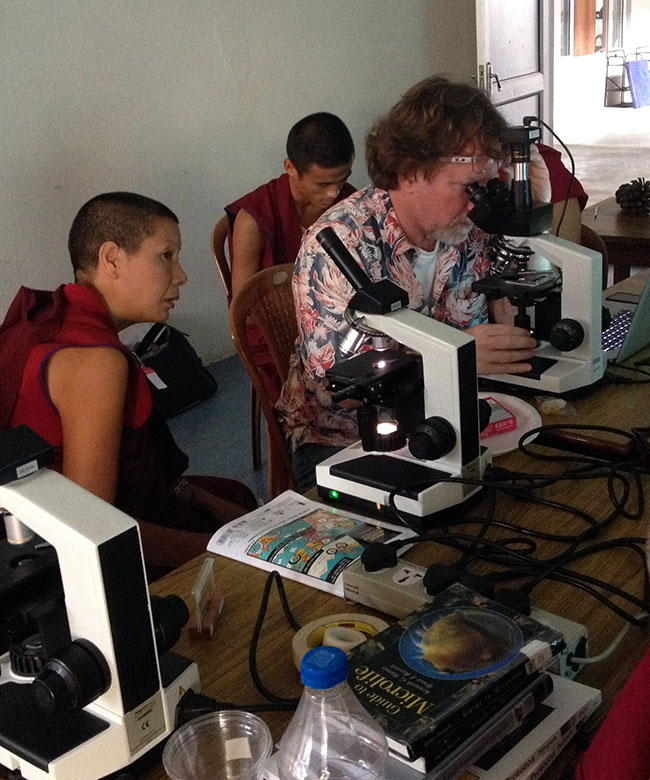Ask a Buddhist, “What is life?” and he will tell you living things must have a level of consciousness. Ask a biologist the same question, and he will tell you life requires a cell.
These two views seem to perfectly encapsulate the infamous bitter battle between science and religion. But is there really a battle? Ask the Dalai Lama, and he will tell you there is not. Instead, there’s a conversation.
“I believe that at heart they share significant commonalities,” such as understanding the nature of reality through critical investigation, the religious leader has written.
In 2001, the Dalai Lama’s office along with the Sager Family Foundation and the Library of Tibetan Works and Archives founded the Science for Monks program, which teaches science to Tibetan monks and nuns. The goal is to enrich the dialogue of how Western science and Buddhism can help each other to benefit the world.
“The two have different intentions that complement each other well,” explained Barry Bruce, professor in the Department of Biochemistry and Cellular and Molecular Biology and the Department of Microbiology. “While science exists to explain how things work in the external world, Buddhism looks closer at how consciousness works and examines implications of human action. Together, they create a complete understanding of the world.”
Bruce was invited to participate in the dialogue by teaching biology at the College of Higher Tibetan Studies in Dharmasala, India.
For ten days last October he taught students who had never had a biology lesson or even heard of a cell. What they knew of life was what could be easily observed on a macroscopic scale.
“Humans, dogs, birds, and insects—all of these easily fit their view of what defined life,” Bruce said.
To challenge their thinking, he introduced the power of 400–2000x magnification and 3-by-2-inch glass slides.
His students were tasked with assembling micro-aquariums with stream water and then studying them under microscopes.
At first, the monks thought they were placing something desolate between the panes. But, when the water was magnified, they saw an explosion of life—amoebas, protozoans, and copepods swimming around, chasing food, and escaping predators. They saw what they defined as consciousless beings behaving as sentient ones.
And, as Bruce put it, “it blew their minds.”
“I couldn’t keep them away from the microscopes. They would see these things that were so beautiful—extremely symmetric, looking like well-crafted jewelry—behaving in a conscious way,” said Bruce.
The monks placed fish food into their aquariums and watched as the tiny organisms propagated and interacted. Through a translator they learned from Bruce the fundamental role of photosynthesis for providing oxygen and supporting living beings.
As Bruce’s lessons drew to a close, the monks had gained a new definition of life.
“The fact that this life was growing in their aquariums using both the fish food and the photosynthetic oxygen helped demonstrate the natural ecosystem that the earth contains,” said Bruce.
According to one of the students, Geshe Tsewang Namgyal, the biology lessons helped them understand the fundamentals of how the body works, which is key to monks’ fulfilling their ultimate duty.
“The main objective of the Tibetan religion is for all other beings to be happy and prosperous, but if you yourself are sick, it’s like you’re in the well while trying to pull someone out of the well,” he explained.
Bruce learned something from his students, too—a sense of peace.
Despite nearly a million Tibetans being murdered since 1950, countless families being torn apart, and their homeland being taken away by the Chinese government, “their culture remains so peaceful and has evolved in harmony,” Bruce said.
The professor had the rare experience of being part of a small group that got to speak directly with the Dalai Lama about this outlook and the role of science in helping monks make a positive difference in people’s lives.
“The Dalai Lama told us that everyone wants to be happy,” Bruce said. “Helping my students understand their environment and its problems as a source of stress may allow them to better the world.”


